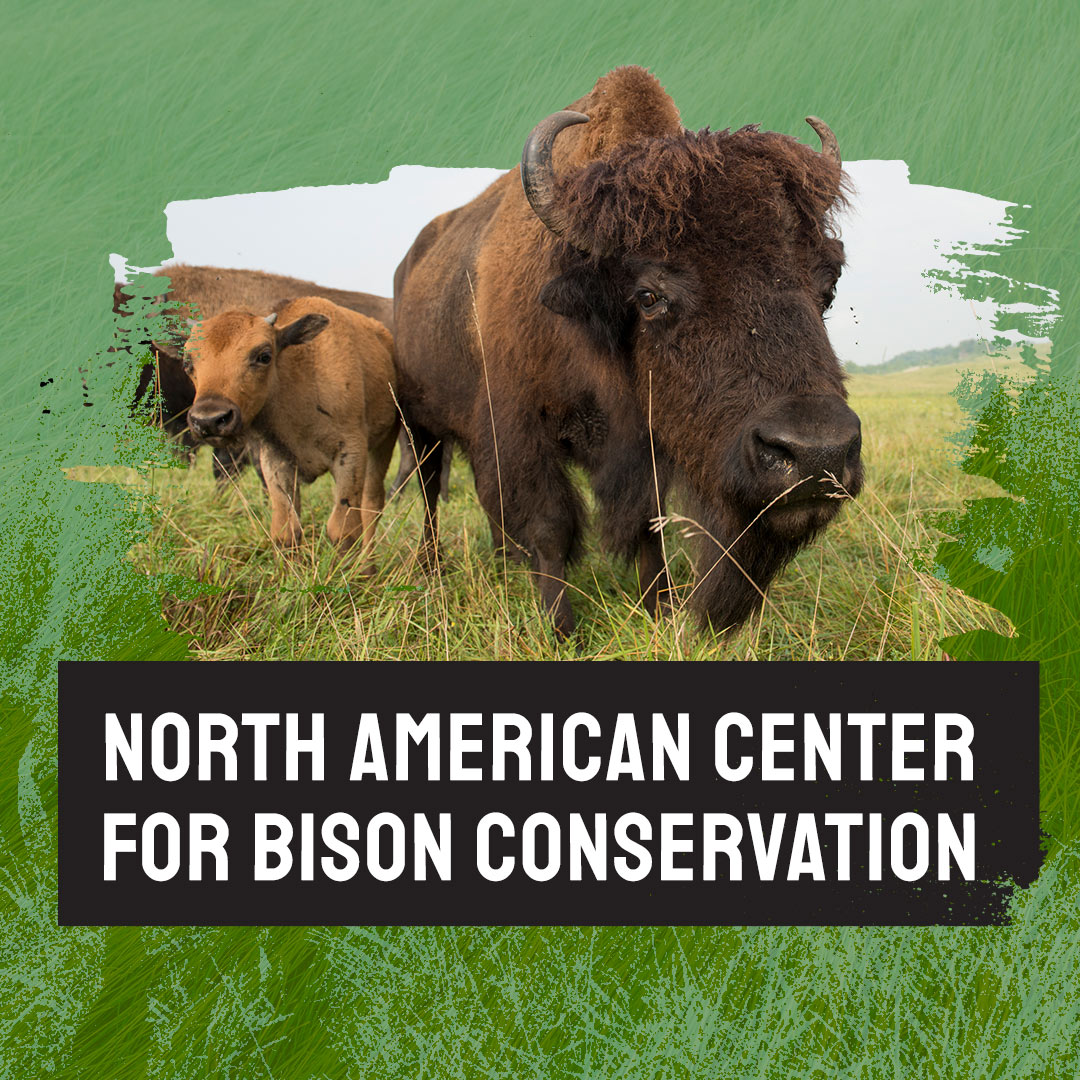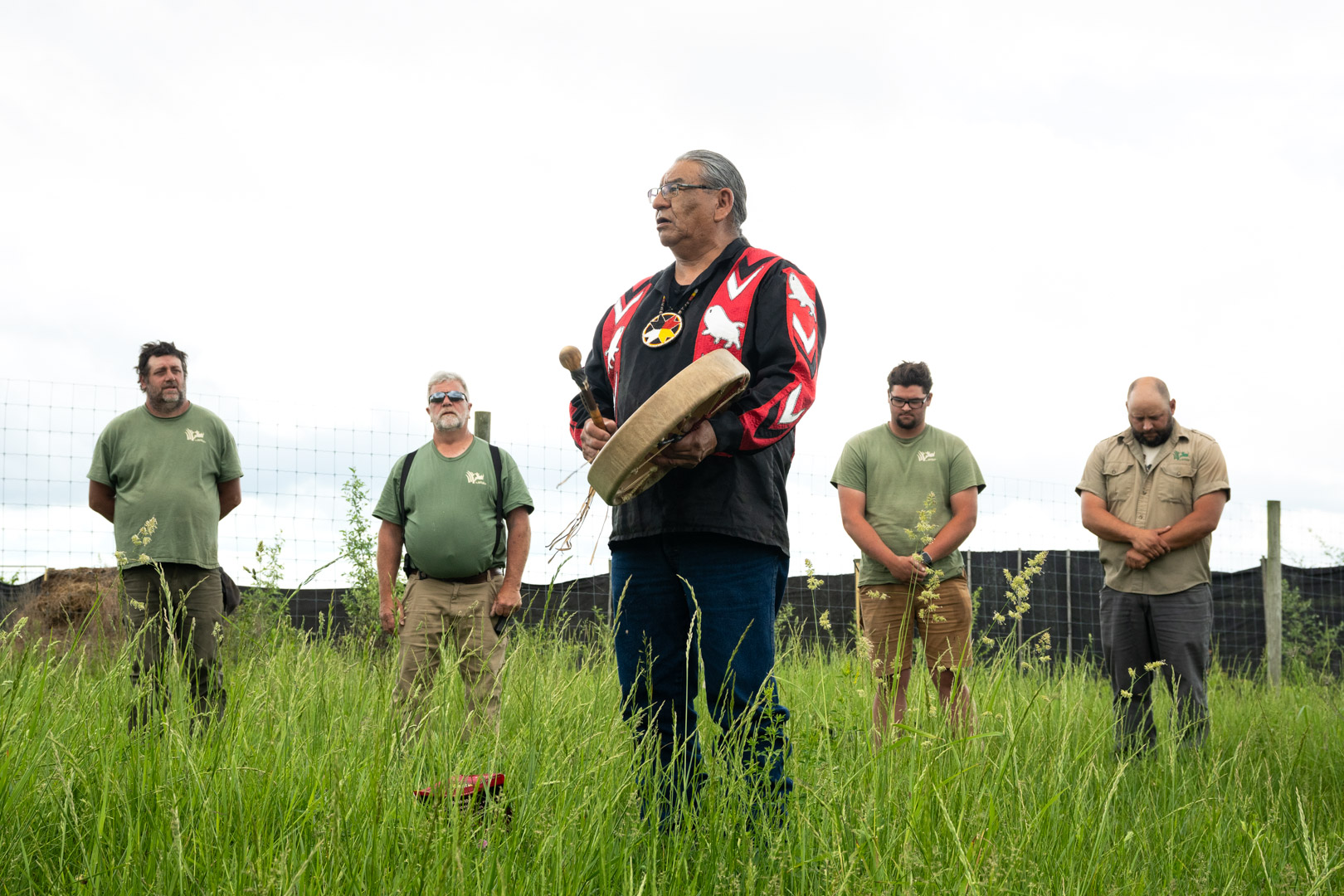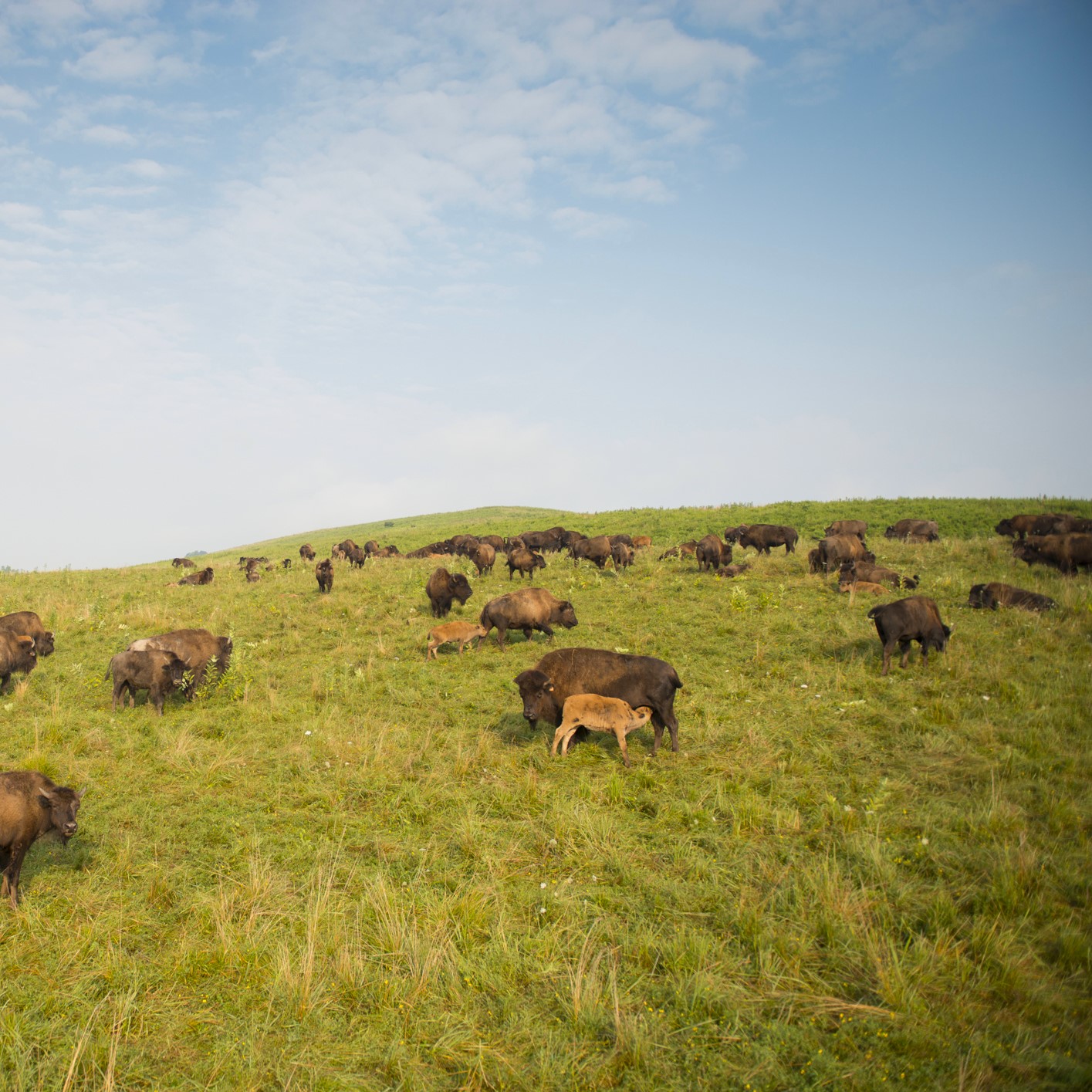Partners in Conservation
Learn about the Zoo’s financial commitment to holistic conservation efforts in Central Africa.


The Wilds is forging a path toward bison conservation excellence through the creation of the North American Center for Bison Conservation.
This initiative will bring together the expertise of The Wilds staff, the Wildlife Restoration Foundation, federal and state natural resource agencies, and tribal entities to manage large-scale bison herds.
The American bison is a keystone species, helping to balance the abundance of plant and animal species in prairie habitat, which once covered over 142 million acres across the United States. Today, less than 5% of these prairies are estimated to remain, making the American prairie one of the most endangered ecosystems on earth.
In addition to contributing to a healthy grassland ecosystem, the American bison—the United States’ National Mammal—is a species with cultural and historical importance.
The Wilds, Wildlife Restoration Foundation (WRF), InterTribal Buffalo Council (ITBC), and Cheyenne River Sioux Tribe have successfully relocated 74 bison from The Wilds conservation center in Ohio to the Cheyenne River Sioux Reservation in South Dakota. This significant transfer marks the first major achievement for The Wilds' steps in a new bison conservation plan and exemplifies a robust and collective commitment to both ecological and cultural preservation.


Together with the scientific investigation and prairie restoration efforts that The Wilds is known for, this program is poised to become a leading model for bison conservation herd management in North American institutions, protecting the species while also preserving North America’s cultural heritage.
Join us in this important mission by donating to The Wilds' Fund!